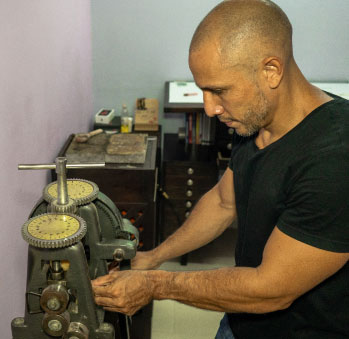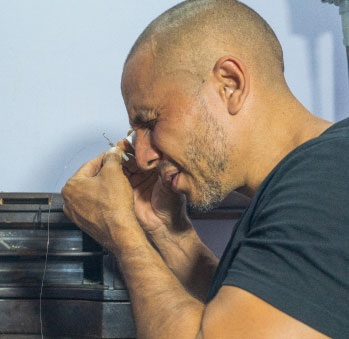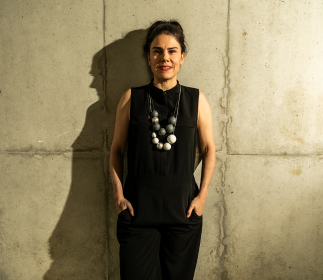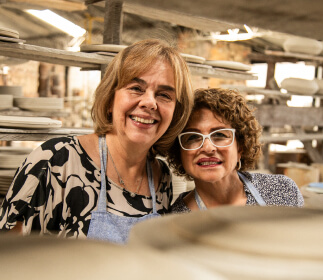Reinaldo Hernández
Workshop: RH Orfebreria
Craft: Jewelry/Fashion Jewelry
Trail: Antioquia Route
Location: Santa Fe, Antioquia
SCHEDULE YOUR VISIT
Calle 9 #2-8
3135211648
rhorfebreria@hotmail.com
@reyhernandezjoyeria
@rhreyhernandez
He says he has “sweetness in his hands.” How can you not smile after that? He has a permanent grin on his face when he recounts how he fell in love with the craft of jewelry-making. He had just finished his active military duty and did not yet know what he wanted to do in life. It was 1998 and, curious as he was, he watched the jewelers work for hours and deeply concentrate on everything they did: how they had surrendered themselves to metal and lent their hands to the pursuit of beauty.
So, when the National Learning Service (SENA, as it is called in Spanish) opened a jewelry course for beginners, he enrolled right away. He is proud to say that, out of the 18 people who started the course, he was the only one who finished. He was so eager to learn that his teachers gave him the keys to the workshop he practiced at so he could continue polishing his technique. Soon after, he started training with a family of master craftspeople. They let him watch as they worked and join them from time to time when making silver wares. They did not give him any gold to work with because it was too expensive for apprentices. He trained for two long years before he was ready to work with this precious metal. Hence, he regards 2000 as the year his real life as a jeweler began. Only until then did he feel he had enough skill to truly and completely give it a go.
He specializes in filigree: a long-standing tradition in Santa Fe de Antioquia. One day in 2003, an older woman suddenly entered the workshop. She told its masters that she knew a technique, that she had learned it when she was a child, and that she wanted to share it before it was too late. She was Doña Nury Figueroa, to whom Artesanías de Colombia (Crafts of Colombia) awarded the Medalla a la Maestría Artesanal (Crafts Mastery Medal) in 2018. Reynaldo followed in her footsteps and, thanks to her, immersed himself in foam weaving.
The latter is another of the jewelry techniques his town is famous for, and he learned all there was to know about it from her. She learned the technique from her father but was never allowed to bloom in this male-dominated trade. Her father, in turn, was taught by José Olarte, who had come into town from Valle del Cauca bringing the technique in question with him. You can barely advance about one centimeter after almost two hours of work if you rigorously follow this technique. The latter was born in the nineteenth century and has become a distinctive feature of Santa Fe’s jewelry. This has been so since they invented a knot that resembled the halter of a horse using gold and silver. Reynaldo became fond of working with foam or estropajo. It became his greatest passion, the technique through which he manages to best express his dexterity and finesse. Being one of the technique’s privileged heirs, he was able to weave a 6-meter-long chain for Doña Nury’s medal. He is aware that his work is part of an enormous legacy. Moreover, he knows that, although he does not carry this tradition in his genes, he definitely does in his hands.
Craft


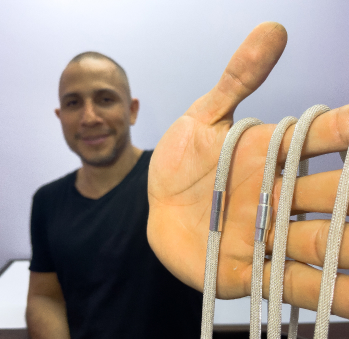



Artisans along the way
Artisans along the way
No puede copiar contenido de esta página








































